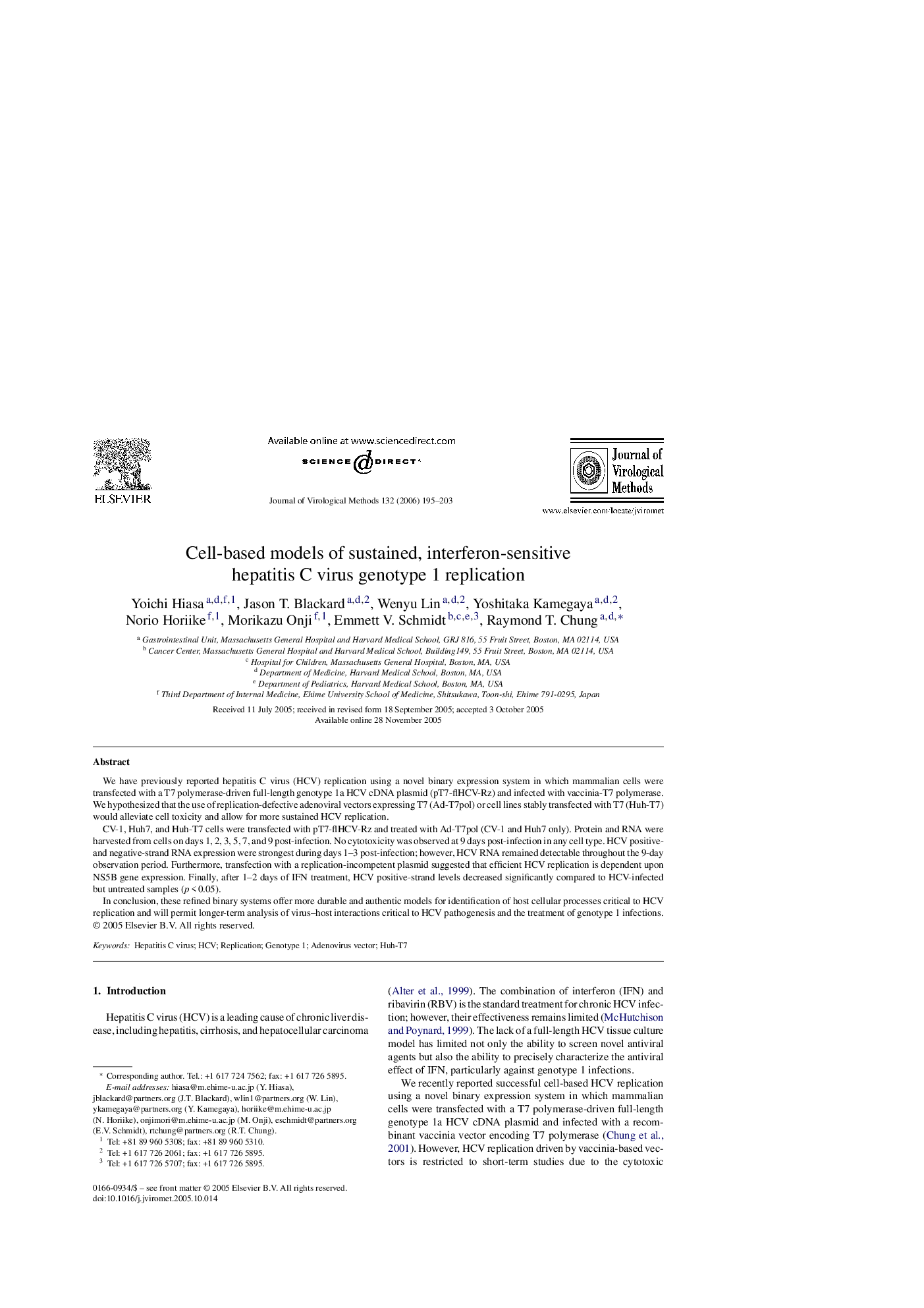| Article ID | Journal | Published Year | Pages | File Type |
|---|---|---|---|---|
| 3408658 | Journal of Virological Methods | 2006 | 9 Pages |
We have previously reported hepatitis C virus (HCV) replication using a novel binary expression system in which mammalian cells were transfected with a T7 polymerase-driven full-length genotype 1a HCV cDNA plasmid (pT7-flHCV-Rz) and infected with vaccinia-T7 polymerase. We hypothesized that the use of replication-defective adenoviral vectors expressing T7 (Ad-T7pol) or cell lines stably transfected with T7 (Huh-T7) would alleviate cell toxicity and allow for more sustained HCV replication.CV-1, Huh7, and Huh-T7 cells were transfected with pT7-flHCV-Rz and treated with Ad-T7pol (CV-1 and Huh7 only). Protein and RNA were harvested from cells on days 1, 2, 3, 5, 7, and 9 post-infection. No cytotoxicity was observed at 9 days post-infection in any cell type. HCV positive- and negative-strand RNA expression were strongest during days 1–3 post-infection; however, HCV RNA remained detectable throughout the 9-day observation period. Furthermore, transfection with a replication-incompetent plasmid suggested that efficient HCV replication is dependent upon NS5B gene expression. Finally, after 1–2 days of IFN treatment, HCV positive-strand levels decreased significantly compared to HCV-infected but untreated samples (p < 0.05).In conclusion, these refined binary systems offer more durable and authentic models for identification of host cellular processes critical to HCV replication and will permit longer-term analysis of virus–host interactions critical to HCV pathogenesis and the treatment of genotype 1 infections.
